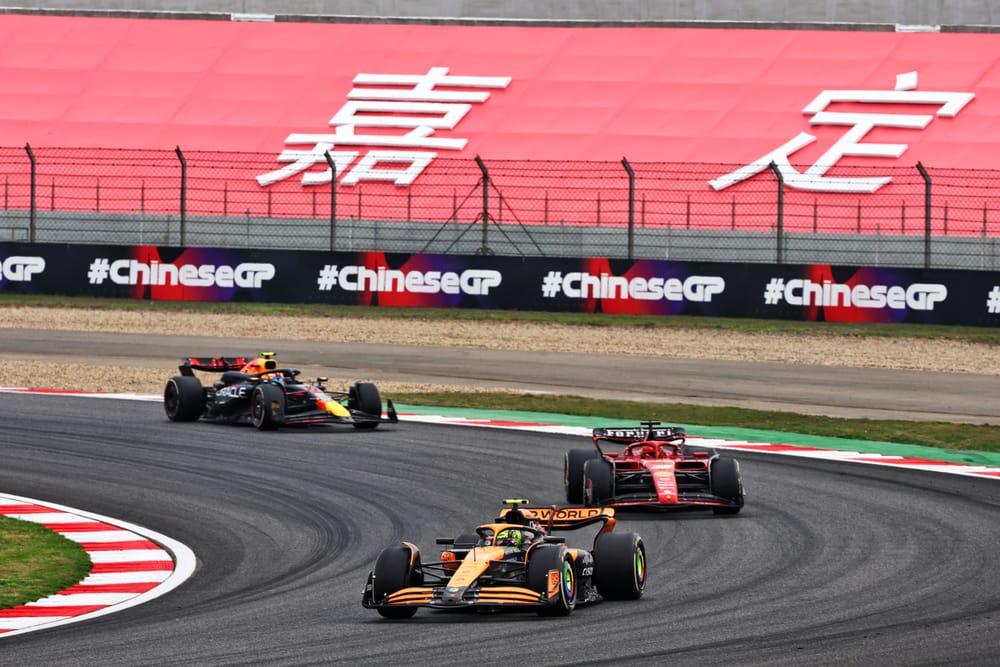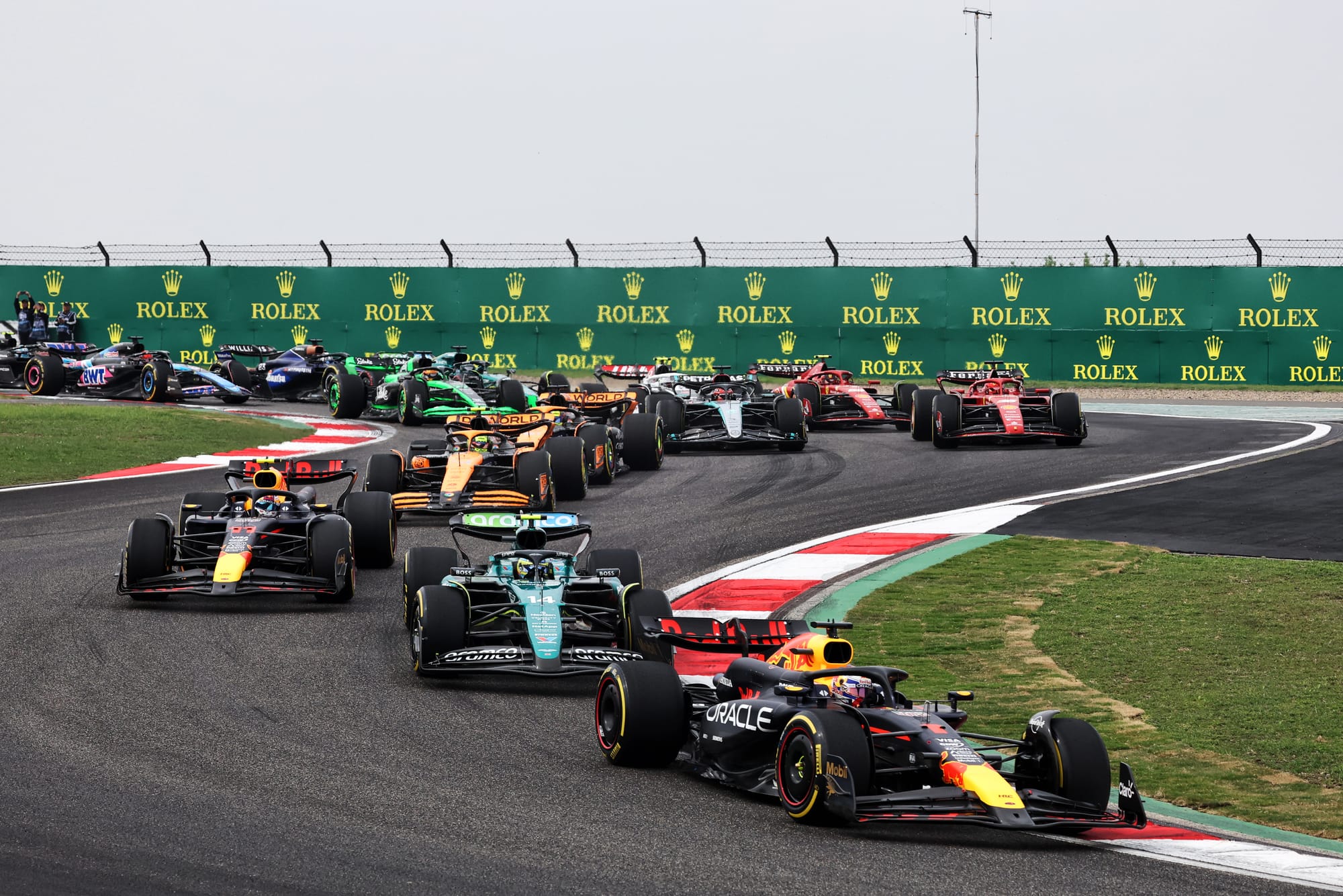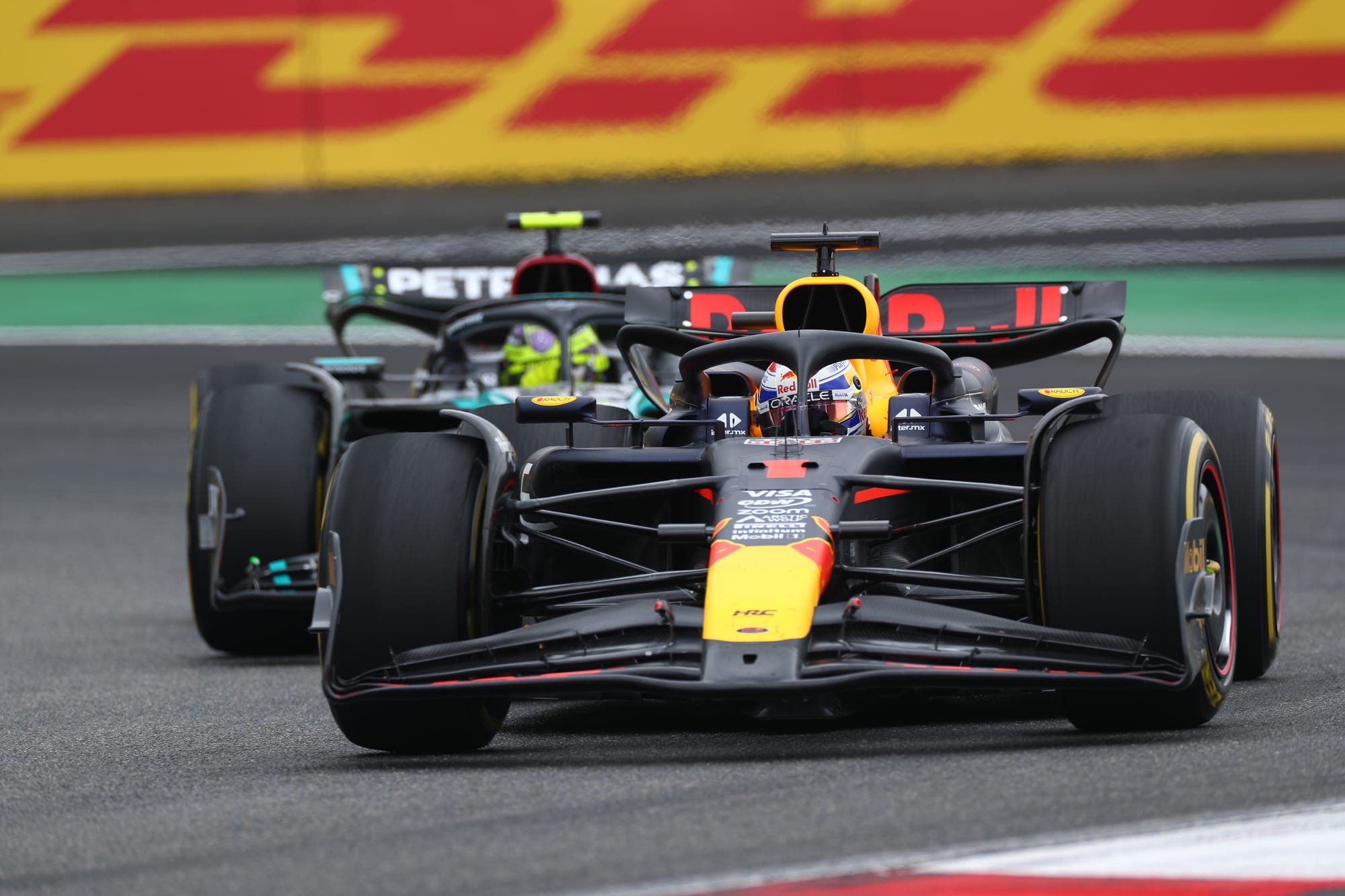Up Next

There was no great mystery in Max Verstappen disappearing off into the distance at the start of the Chinese Grand Prix, then doing it all over again after a safety car period at around half-distance wiped out his hard-won advantage.
The mystery was much more about Lando Norris’ superb second position, his McLaren comfortably defeating Sergio Perez’s Red Bull and both Ferraris in a straight fight. But we’ll come to that in a moment.
For Verstappen it was fairly routine despite the interruptions (initiated by Valtteri Bottas’s broken-down in-gear Sauber and extended by a concertina nose-to-tail sequence of midfield impacts upon the restart).
Having saved both sets of his allocated hard tyres, Verstappen had switched to the first set after 13 laps but had the luxury of the other set when the safety car came inconveniently early, obliging him to make his second stop just 10 laps after his first.
That first stop was early, requiring him to overtake Charles Leclerc and Norris upon rejoining. But that was not a significant problem such was his pace advantage.
Red Bull pitted Perez on the same laps as Verstappen each time, as Checo was far enough behind that there was no need to stack him. Between the first stop and the second he’d overtaken both Ferraris but had yet to reach Norris. The VSC which preceded the safety car allowed Norris and Leclerc to make their first (and only) stops at an eight-second saving to the rest of the pack - Norris was fortunate that the VSC stayed out long enough for it not to matter that he’d just passed the pit entry road as it first came.
When the safety car then came out, bunching the field up and obliging Red Bull to pit both cars so as to make their second stops without a disastrous loss of places, Verstappen rejoined still leading but Perez had dropped back behind Leclerc. Passing the Ferrari for a second time took so much from his tyres that he was not able to pose a threat to Norris despite there being 17 laps left.
“Once you’re fighting it’s game over for the tyres,” Perez said. “You use so much of your tyre that they never come back. I paid the price but it was the only way I could get by Charles.”
Had he not been so far behind Verstappen at the first stops, he’d conceivably not have exited the second stops behind Leclerc and might therefore have been able to catch and attack Norris. But he’d been delayed in that first stint by having to get by a briefly starring Fernando Alonso, who’d sliced into second at the start, even taking a nibble at Verstappen. It took five laps for Perez to find a way by the Aston Martin as its tyres wilted. By which time Verstappen was 5.5s up the road.
Alonso was then passed by Norris, who’d been much more circumspect in those early heavily fuelled laps.
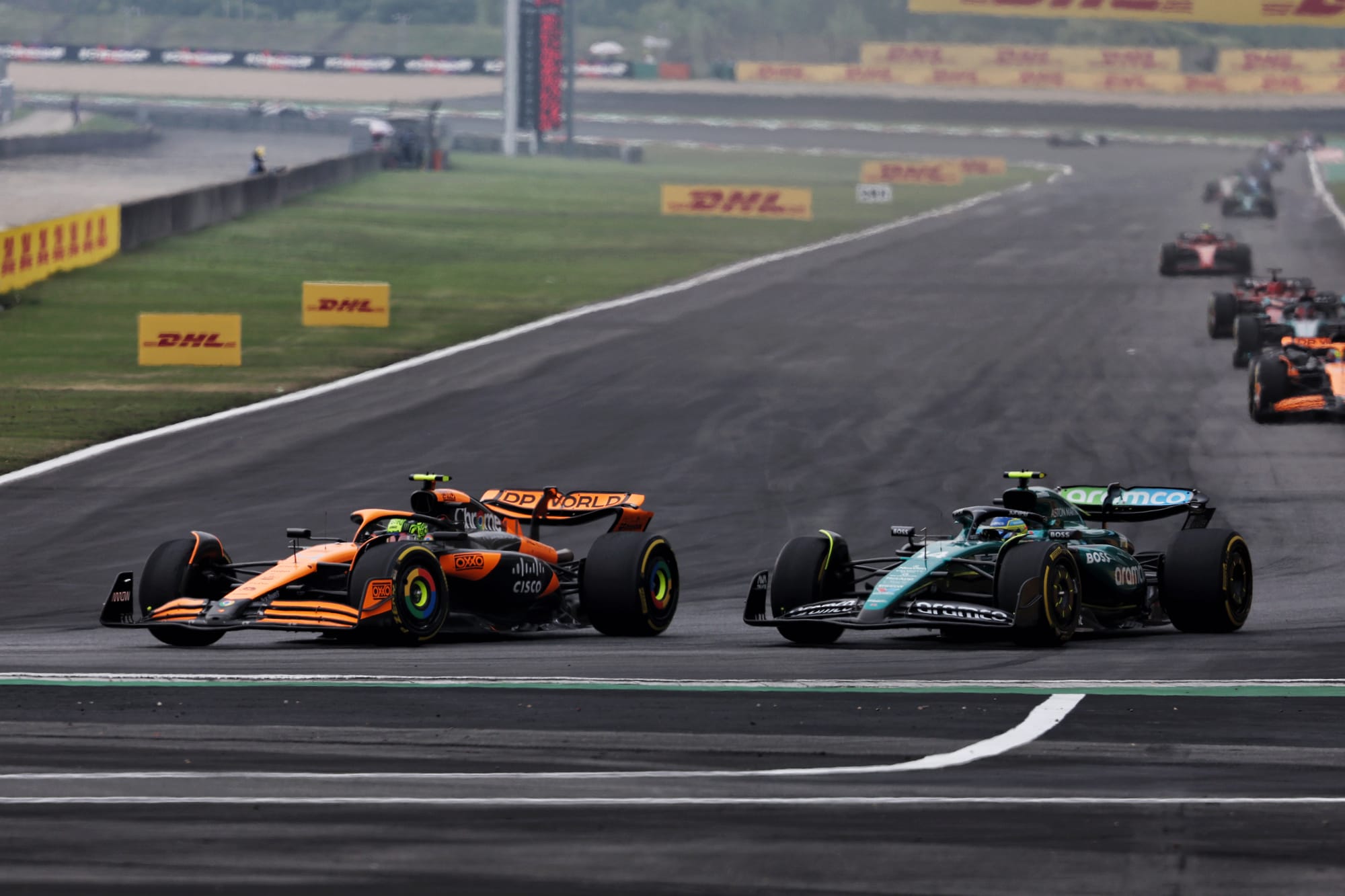
So fast were Alonso’s tyres now degrading that he was brought in on lap 11 and switched to his only set of hards. Unlike at Red Bull, Aston didn’t have another set of fresh hards, so this made Alonso very vulnerable to there being a safety car before he’d gone long enough on this set to make the strategy work.
Which is exactly what happened. Hence his choice of softs at the safety car stop and the enforced third stop and recovery drive to seventh, with the fastest lap along the way and a remarkable recovery from being wildly out of line out of the final corner.
The contrast between Alonso’s gung-ho, ‘nothing to lose’ early charge and Norris’s much more calculated drive was marked. That’s part of the explanation for his remarkable result here. But not all.
As his team boss Andrea Stella said: “We came here thinking this track would be a damage limitation event but it ended up being our most competitive race so far… We need to find something in our understanding but F1 often surprises you because performance is sensitive to so many parameters…”
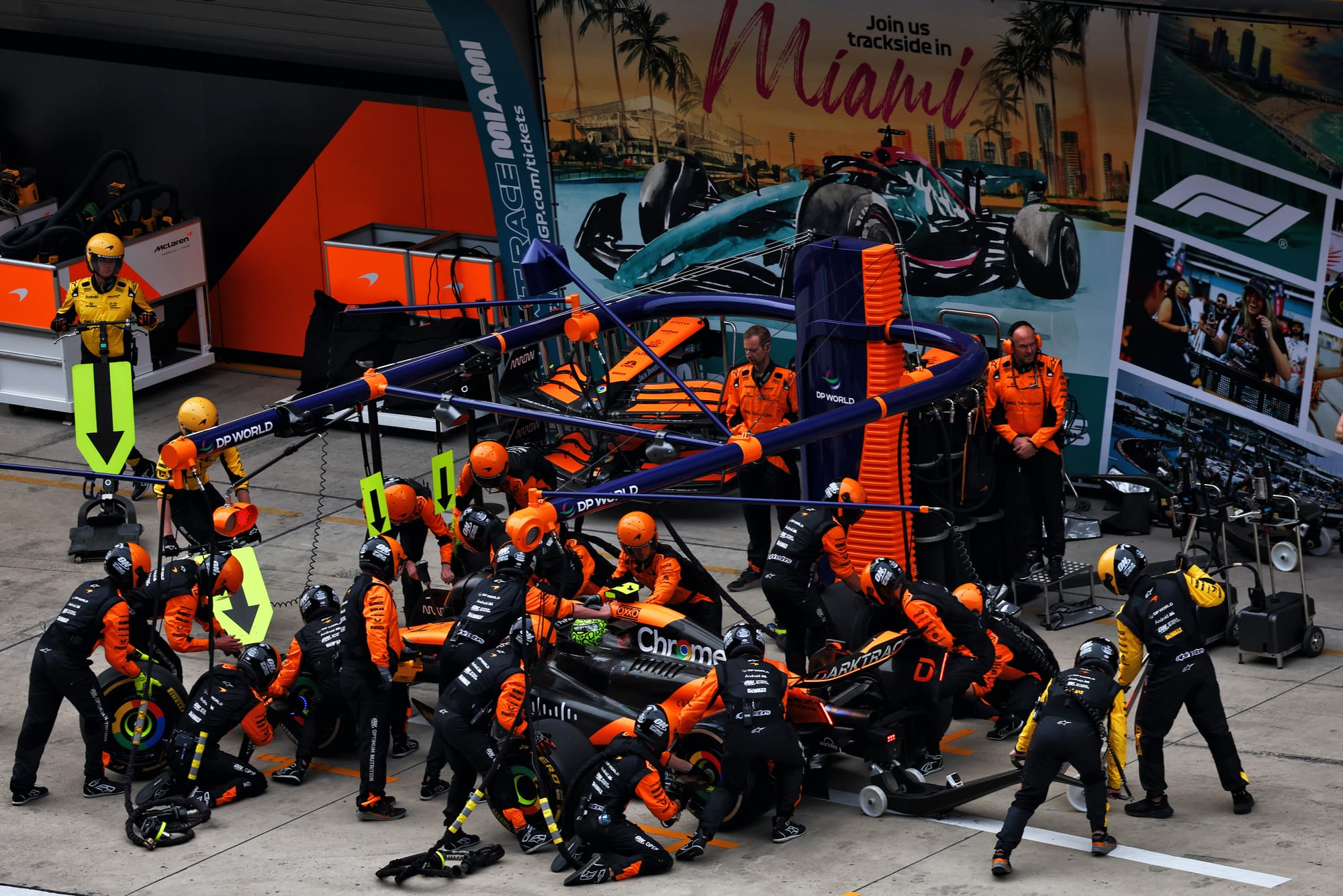
Getting the time-cheap pitstop under the VSC was part of it, as was the way the subsequent safety cars helped Norris (and the Ferraris) make a one-stop work. There were 10 laps of VSC/safety car running keeping the stress from the long-running tyres. But the real mystery was how Norris’s pace was so much better than that of the Ferraris.
“We thought we’d be better,” said Leclerc after finishing fourth, 10s behind Norris and a similar distance clear of team-mate Carlos Sainz (who didn’t get the benefit of a VSC-aided stop). “But as soon as we got onto the hard tyre Lando was half a second faster. I don’t understand.”
Once the second safety car had come in (at the end of lap 31) and Norris and Leclerc were free to race on their hard tyres (fitted five and six laps respectively before that safety car), Leclerc was expecting to simply nail the McLaren. Instead, Norris pulled away easily.
Watching onboard, Leclerc has more understeer at every slow corner. As he turns right at Turn 8, his left hand is at about two o'clock on the wheel, Norris’s at about one o'clock. At the Turn 11 left-hander, Leclerc’s right hand is at around 11 o'clock, Norris’s only at around 12.
Ferrari had engineered in plenty of understeer after the sprint race, knowing that this would compromise its drivers a little in qualifying but with the expected payback in the race of better rear tyre degradation.
The first unpleasant surprise for Leclerc was that the qualifying compromise had allowed McLaren and Alonso’s Aston Martin to outqualify both Ferraris. But he remained confident he’d be sailing past them in the race; it was only a question of when. Norris and Alonso each expected the same. Norris even made a bet with his engineer Will Joseph that he’d be at least 35s behind Ferrari at the end.
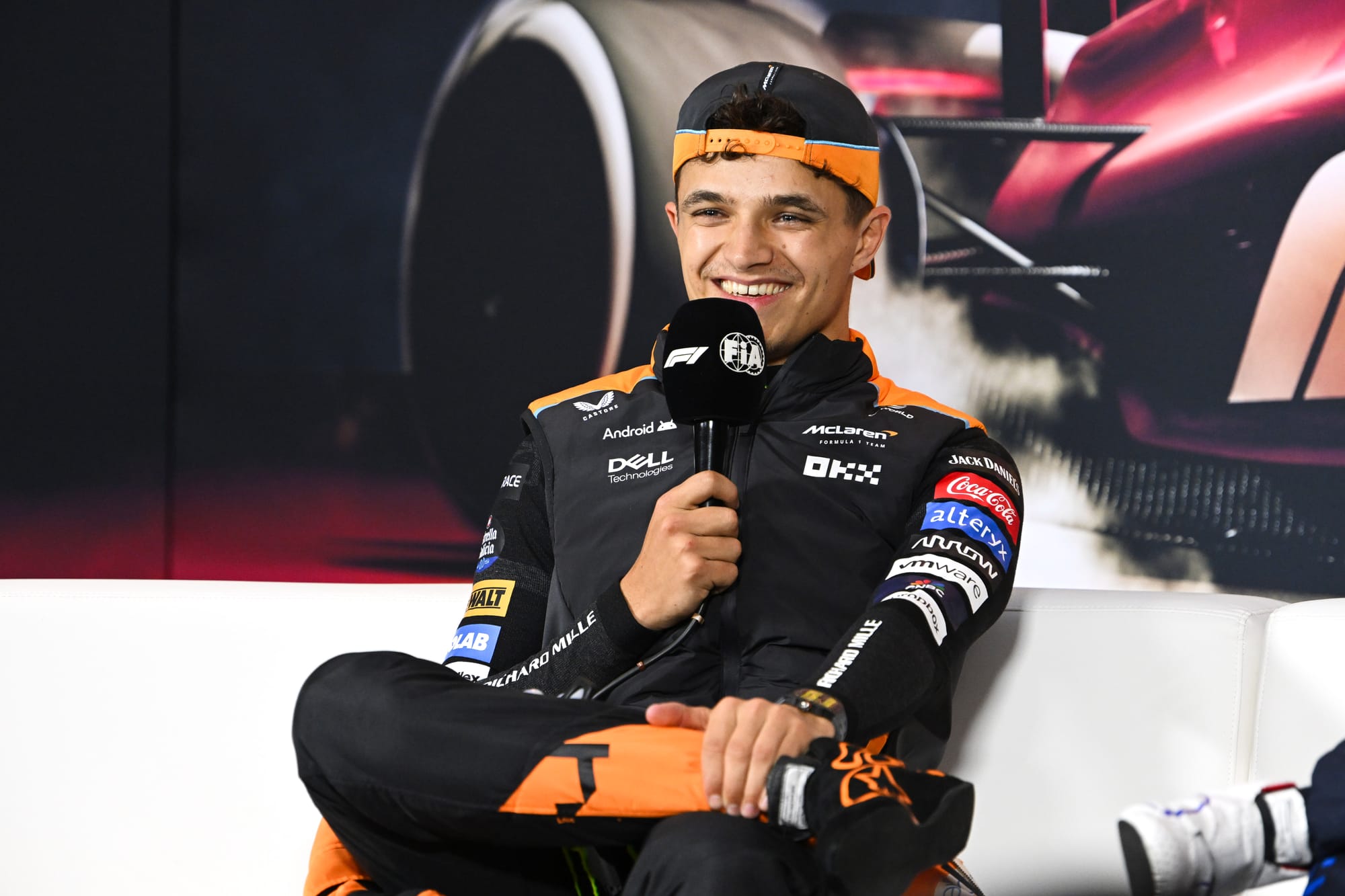
But in the case of Norris, it wasn’t like that at all. Even Perez’s Red Bull, once past Leclerc, could make no impression on the McLaren. So, with greater understeer on a circuit where the rear tyres were the limitation - and in a Ferrari which has so far this season been better on the tyres than the McLaren - how come the Ferrari was slower?
For one thing, the McLaren was running more wing at the rear, with a corresponding higher angle of front flap. But even with the car like that, in the previous day’s sprint Norris had suffered much more rear deg than the Ferraris ahead of him.
He’d only managed to hang onto them as long as he did thanks to being in a DRS train headed by Alonso’s Aston which had deg at least as bad as the McLaren’s. Once the Ferraris had burst past the Aston in that sprint, they were gone and clearly the second-fastest cars in the race. Which all tallied.
The Sunday picture was different. Both made set-up changes to their cars, Ferrari perhaps more so, reading between the respective words of Leclerc and Norris going into GP qualifying. But the challenge on Sunday turned out to be just enough different for the competitive pendulum to swing on that delicate pivot of track conditions.
Norris was as surprised as Leclerc about the way it had played out. “The wind came down and the track was cooler,” he said. “That seemed to help us… we’re still learning about this track, the Tarmac’s quite odd. Maybe that played into it. Maybe with the old Tarmac we’d have struggled a bit more.”
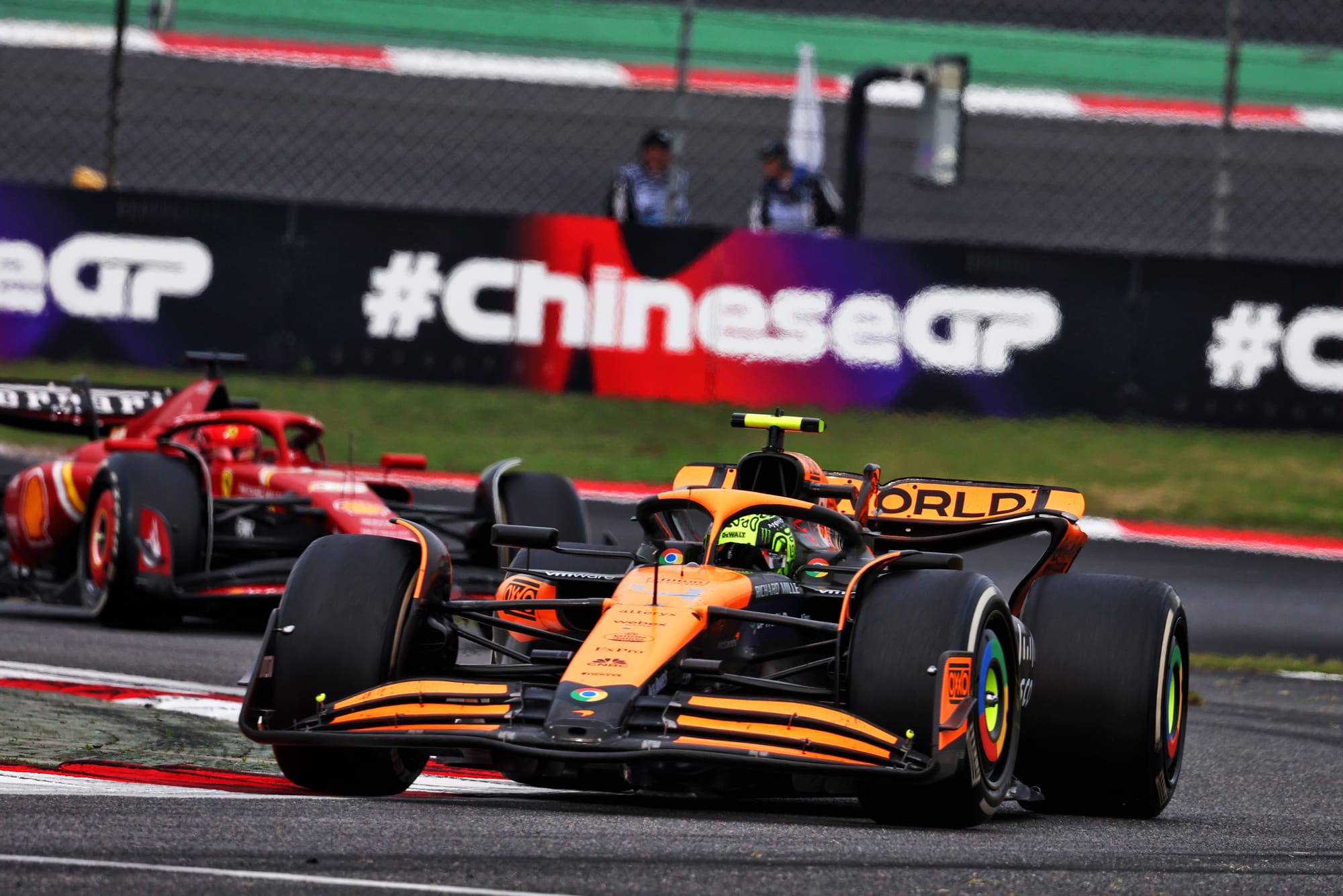
But here’s how an engineer summed up the generic tyre challenge around Shanghai with the benefit of post-race hindsight. “It was about surface overheating of the tyre.”
So, not about the usual thermal challenge of the core temperature where a progressively hotter core gives the tread ever-less support. It wasn’t a standard thermal deg race. Neither was tyre wear a factor.
“The tyres were limited by their surface temperature and that was exacerbated by sliding. Once the rears got too hot they’d take ages to come back. Get a snap and they’d instantly to be too hot. It was a case of trying to slide the fronts to get the temperatures closer to where the rears were.”
Getting balanced tyre temperature between the axles was unusually difficult and that was Sunday’s challenge. Norris’s McLaren was the only car able to do this comparably well to Verstappen’s Red Bull. Yet in the Saturday sprint race, the rears were suffering conventional thermal degradation.
In that challenge neither Alonso’s Aston nor the McLarens were anything like as good as the Ferraris. Just as we saw at those other thermal deg races in Bahrain and Suzuka. But the slightly different challenge of Sunday completely changed that picture.
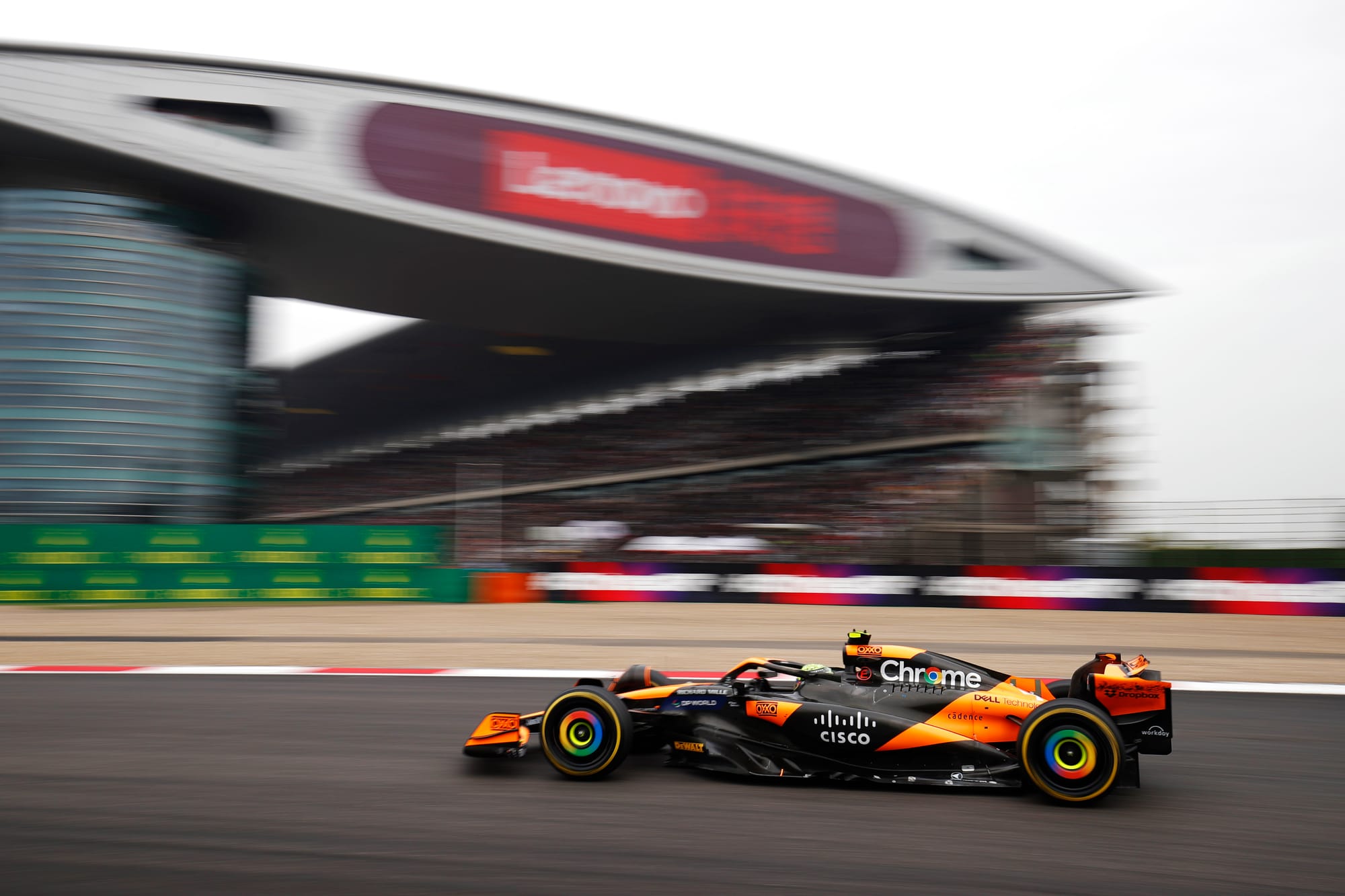
Norris was super-delicate in how he treated the tyres. He was keeping off the exit kerb serrations which in distorting the sidewalls put a lot of heat into the rear tyres. His steering was one-sweep and measured. You will have heard him respond to the suggestion of using more engine braking to reduce his understeer with a firm, “No thank you.” The McLaren was unexpectedly good on Sunday but he made fantastic use of it.
George Russell kept Sainz’s Ferrari in sight after having passed both the red cars on the opening lap, but ultimately the Mercedes didn’t have the pace to threaten them. Lewis Hamilton went in a totally different direction on set up after his second place in the sprint and during his recovery drive to ninth from 18th encountered “more understeer than I’ve ever had”.
In between the Mercs was Oscar Piastri, who had no chance of emulating team-mate Norris after his McLaren took on heavy diffuser damage from the concertina accident at the safety car restart (which also accounted for the retirement of Daniel Ricciardo’s RB).
Nico Hulkenberg again ground out a 10th-place finish in a Haas which was heavily updated. Zhou Guanyu was given a standing ovation by the fans for his 14th place finish, with a special place reserved for him on the pit straight. That felt like a significant moment for F1.


